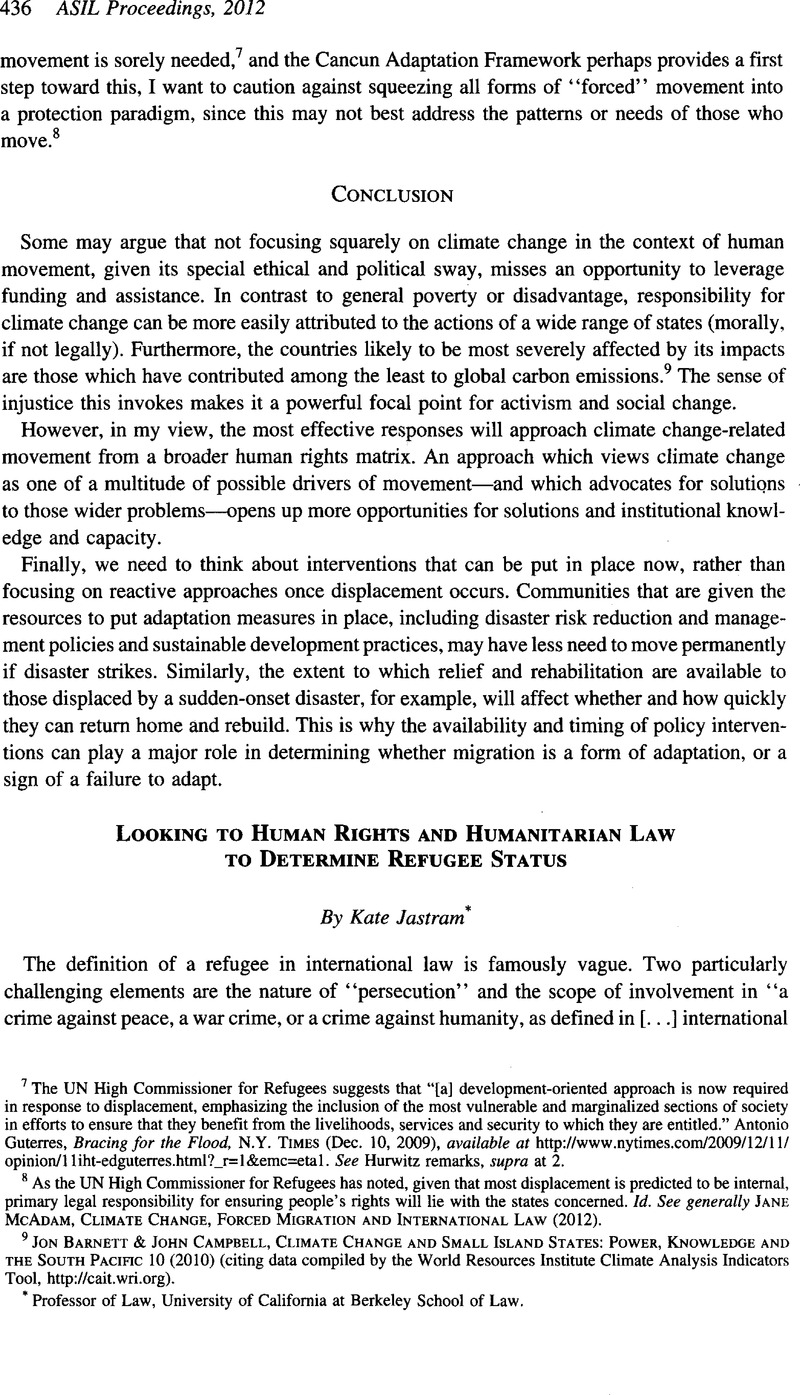Article contents
Looking to Human Rights and Humanitarian Law to Determine Refugee Status
Published online by Cambridge University Press: 28 February 2017
Abstract

- Type
- International Norm-Making on Forced Displacement: Challenges and Complexity
- Information
- Copyright
- Copyright © American Society of International Law 2012
References
1 1951 Convention Relating to the Status of Refugees, arts. 1A(2) & lF(a), respectively.
2 UNHCR, Handbook on Procedures and Criteria for Determining Refugee Status, para. 51 (1992) (emphasis added).
3 European Union Qualification Directive (2004), art. (9)(l)(a) (emphasis added).
4 Jastram, Kate, Economic Harm as a Basis for Refugee Status and the Application of Human Rights Law to the Interpretation of Economic Persecution, in Critical Issues in International Refugee Law: Strategies Toward Interpretative Harmony 143 (Simeon, James C. ed., 2010)CrossRefGoogle Scholar.
5 Jaya Ramji-Nogales, Andrew I. Schoenholtz & Philip G. Schrag, Refugee Roulette: Disparities in Asylum Adjudication and Proposals for Reform (2009).
6 At http://www.epc.eu/events_rep_details.php?cat_id=6&pub_id=1430 (last visited Apr. 25, 2012).
7 The study counts opinions, allowing for multiple opinions in one case, rather than cases. Cases covered the period from 1984 to the present.
8 UNHCR, Guidelines on International Protection: Application of the Exclusion Clauses: Article if of the 1951 Convention Relating to the Status of Refugees (2003).
- 2
- Cited by




